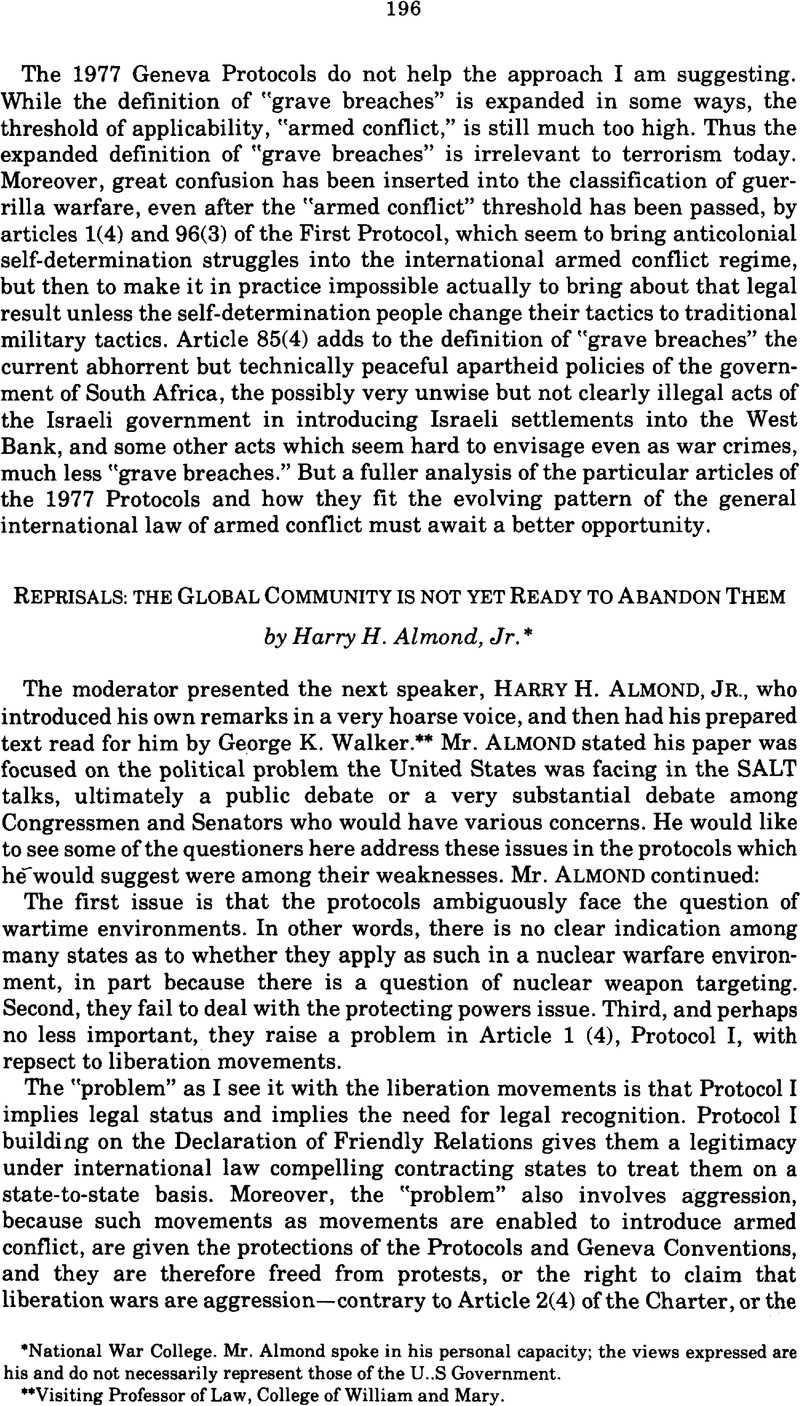Published online by Cambridge University Press: 28 February 2017

** Visiting Professor of Law, College of William and Mary.
1 Protocol for the Prohibition of the Use in War of Asphyxiating, poisonous or other Gases, and of Bacteriological Methods of Warfare, signed in Geneva, June 17, 1925, entered into force for the United States April 10, 1975, 26 U.S.T. 571, TIAS No. 8061, 94 LNTS 65.
2 E.g., Article 85, Protocol I.
3 F. KALSHOVEN, BELLIGERENT REPRISALS (1971).
1 M. McDOUGAL & F. FELICIANO, LAW AND MINIMUM WORLD PUBLIC ORDER, 679-89 (1961).
2 The legal requirements on the use of force are set forth in FM 27-10, Department of the Army Field Manual, The Law of Land Warfare, July 1956, pages 176-78.